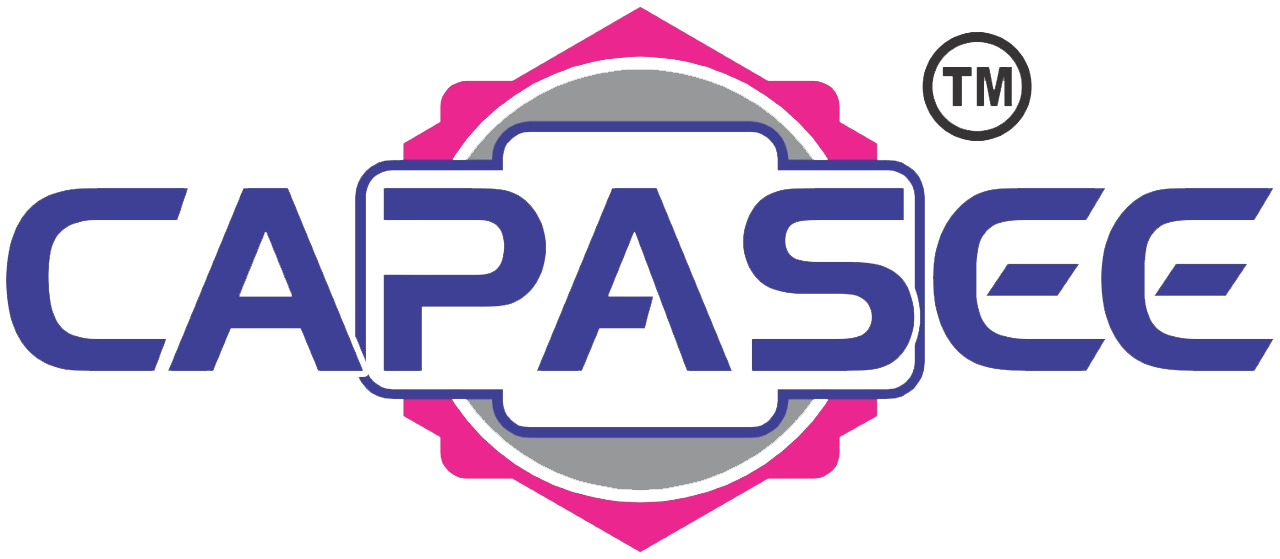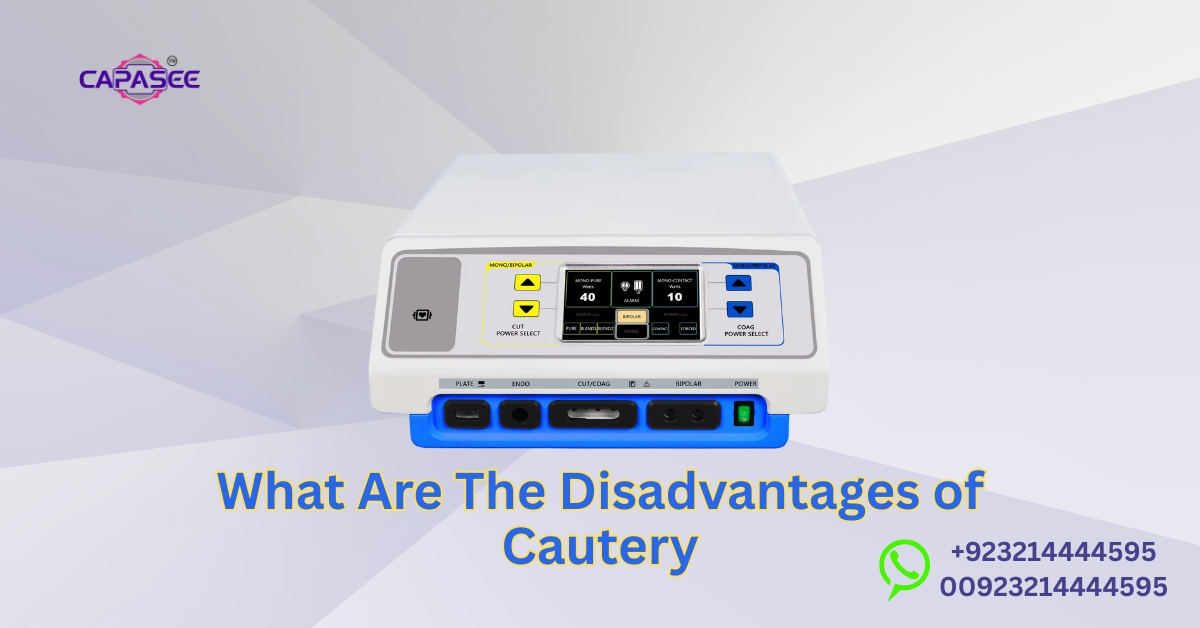Medical treatments can sometimes be an ideal solution, but there is always a downside to it that you do not hear about right at the beginning. You might have been wondering about cautery, and already know that it is used to prevent bleeding or remove unwanted tissue. Nevertheless, the idea of burning or sealing tissue may be frightening, and most individuals would like to know the actual negative consequences before giving consent. It is there that the study of the disadvantages of cautery is so valuable.
In this blog, you will get a clear picture of what cautery may do to patients, the dangers, potential side effects and the reasons why it is not necessarily the best choice. We will use plain English to explain things to you instead of confusing you with medical terms so that you know what to expect. At the conclusion, you will be better informed and will be able to draw the pros and cons regarding the disadvantages of cautery and its medical applications.
Key Disadvantages of Cautery in Surgical Procedures by Capasee Electro Medical Engineering
The use of cautery is common in modern surgery, but it carries clear limits. Doctors often choose it to control bleeding or remove tissue. Still, the disadvantages of cautery include tissue damage, healing issues, and possible burns in surrounding areas. These surgical cautery problems make it important to understand both benefits and risks.
Our cautery machines are designed to reduce errors, yet some challenges remain. The cautery device drawbacks involve heat spreading too fast, leading to delayed recovery. Such cautery machine limitations are among the key disadvantages of cautery, showing why every surgeon must handle the equipment with care. These issues highlight cautery safety concerns and the need for skilled use in Pakistan.
| Cautery Issue | Explanation |
| Cautery complications | Tissue burns, delayed healing |
| Cautery machine performance issues | Power fluctuation, overheating |
| Cautery procedure risks | Scarring, nerve damage |
Common Electrocautery Side Effects and Their Impact on Patients
Patients may face several cautery side effects after treatment. The most common negative effects of cautery surgery include pain, swelling, or minor infection. These electrosurgical disadvantages of cautery affect comfort and can slow down recovery. Knowing what are the risks of cautery helps patients prepare for possible outcomes.
Other cautery uses in medical procedures include skin burns and sensitivity around treated areas. Sometimes the device may cause cautery tissue damage, which affects healing. This highlights further disadvantages of cautery that are critical to consider. This is why doctors track the cautery impact on the healing process closely. With proper care, most possible complications after cautery treatment can be managed early.
You May Also Read This Blog: Bipolar Cautery Machine Price in Afghanistan
Exploring Cautery Risks and Complications During Surgery
In operations, cautionary complications may manifest themselves due to excessive power settings. These risks of the cautery methods can cause nerve injuries or scarring. Misuse poses cautery safety issues and displays the inadvisability of cautery. The disadvantages of cautery have necessitated the high need for strict cautery device safety measures in all hospitals to reduce the adverse effects.
Modern systems like Capasee Electro Medical Engineering cautery solutions help reduce danger. Yet, doctors must know how to handle cautery complication management. They balance cautery effectiveness versus risks for safer results. Reports on the disadvantages of cautery, including the disadvantages of bipolar electrocautery, also show higher chances of burns. With training, most electrosurgical cautery problems can be explained and avoided.
Addressing Cautery Wound Healing Issues and Postoperative Challenges with Capasee

The disadvantages of cautery become clear when we talk about recovery. Patients often face cautery healing issues like delayed skin repair, redness, and swelling. These complications of the cautery cause scars and are painful for weeks. The cautery tissue damage and slow recovery need to be prevented even in the presence of advanced systems like our cautery.
Another concern is the heat effect of the device. Cautery procedure risks may include infections if wounds heal slowly, along with visible scars. Such cautery device drawbacks show the need for safer practices in Pakistan. While cautery effectiveness versus risks is debated, doctors rely on cautery injury prevention and strict cautery device safety measures to protect patients.
| Problem | Cause | Impact on Patient |
| Scar formation | High heat levels | Visible marks |
| Delayed healing | Burnt skin tissue | Longer recovery |
| Pain & swelling | Thermal effect | Post surgery discomfort |
Scar Formation After Cauterization and Delayed Epithelization Explained
One of the major disadvantages of cautery is the risk of scars. The negative effects of cautery surgery include thick marks caused by burns. In many cases, how cautery causes tissue damage becomes a clear reason for delayed epithelization. Such surgical cautery problems can be distressing for patients, especially when cosmetic results matter.
Doctors in Pakistan often monitor the disadvantages of cautery and its impact on the healing process very closely. Electrosurgery cautery problems explained by experts highlight that burns slow the growth of new skin. This makes the wound fragile for weeks. Capasee Electro Medical Engineering cautery solutions help reduce scarring, but the risks and disadvantages of the cautery method remain in sensitive areas of the body.
Postoperative Pain and Thermal Damage from Cautery: What Patients Should Know
One of the usual side effects of cautery and postoperative pain is pain. The swelling and tenderness can be caused by the deep burns that the heat used can cause. These possible complications after cauterization treatment can take days. These are the electrosurgical drawbacks of cautery with regard to comfort and daily activity, which result in slower recovery.
Greater threats are also caused by thermal damage. Problems related to the use of a cautery machine, such as power fluctuation, can enhance burns. It is in such a case that the question of when not to use cautery is an important question for the surgeon. Doctors reduce risks with adequate cautery complication prevention efforts and cautery device safety protocols, although the drawbacks of bipolar electrocautery continue to indicate greater chances of burns versus other techniques.
Mitigating Electrosurgery Drawbacks and Bipolar Cautery Complications with Capasee Solutions

The disadvantages of cautery include burns, swelling, and slow healing. Nerve irritation, scars, and discomfort are some of the complications associated with cautery in patients in Pakistan. These cautery side effects are the consequences of the expansion of heat in surgery. Questions such as cautery tissue injury and issues with surgical cauteries suggest that more effective equipment with fewer damaging outcomes should be created.
Many of the risks in cautery procedures can be avoided with modern tools. Our cautery solutions aim to provide solutions to the issues of cautery safety, which include stable power and enhanced control. This reduces the restrictions of the cautery machines and eliminates severe burns. Although the cautery efficacy against risks should be taken into account, cautious usage can decrease the risks of cautery use in hospitals.
| Cautery Issue | Cause | Result |
| Scarring | Thermal spread | Long recovery |
| Pain | Deep burn | Post surgery discomfort |
| Infection | Delayed healing | Risk of complications |
Electrocautery Related Inflammation and Tissue Damage
Inflammation and burns are often disadvantages that heat energy may cause with electrosurgical cautery. The side effects of this type of surgery can be redness, swelling, and soreness in the area of the wounds. Research demonstrates how cautery results in tissue destruction when heat penetrates deeper layers of skin. This retards healing and heightens the cauterizing effects on the healing process in most patients.
Professionals caution that potential problems following cautery treatment comprise delayed epithelization and infection. Problems with electrosurgical cautery, as described by surgeons, indicate that uncontrolled burns predispose to risks. Bipolar electrocautery disadvantages also present more burns in the sensitive areas. Early attention and careful management of complications minimize these risks, although the healing problems of caution are still a significant concern.
Read More: Our Products
How Capasee Electro Medical Engineering Enhances Safety to Minimize Cautery Risks in Surgery
In modern systems, there are safety precautions of cautionary devices that reduce burns and scars. Capasee Electro Medical Engineering cauteries avoid overheating, provide a solution to the problem of cautery machine performance, as well as enhance the recovery. This type of technology entails a solution to the shortcomings of cautery devices and provides safer alternatives to patients in Pakistan. This assists in minimizing the risks of cautery procedures, both during small and major surgeries.
Before and after the operations, doctors use strict precautionary measures of injury. They also adhere to the rules of safe recovery of cautery complication management. Advanced design decreases the cases in which cautery is contraindicated by rendering the procedure safer. Although the dangers of the cautery technique cannot be eliminated, our cautery solutions introduce greater control and safety of the treatment.
FAQ’s
What are the risks of cautery?
Burns, scars, swelling and delayed healing can be among the risks of cautery unless done carefully.
What are the risks of cauterization?
Depending on the part of the body treated, cauterization can lead to tissue damage, infection, or discomfort.
What precautions should be taken during cautery?
The complications are less common due to efficient power settings, sterile equipment, and professional handling that ensures the safety of patients.
Does cautery leave marks?
Yes, there are small scars or black spots that can be obtained due to cautery, but with appropriate care, they will disappear in the course of time.
How long does it take for skin to heal after cautery?
It also takes two to three weeks for skin to recover, and more severe burns could take longer.
Final Thoughts
Before deciding in favor of this type of surgery, it is essential to know about the disadvantages of cautery. Although cautery is a safe method of bleeding control and treatment of tissue, it may cause burns and scarring, slow healing, and other complications when it is not performed correctly. The patients must know about the cautery side effects, cautery tissue damage, and cautery safety issues in Pakistan. Through advanced equipment, such as Capasee Electro Medical Engineering cautery solutions, a lot of risks can be minimized. The advantages and disadvantages of cautery have been taken care of by close management, knowledgeable operation and close maintenance in order to strike a balance.



